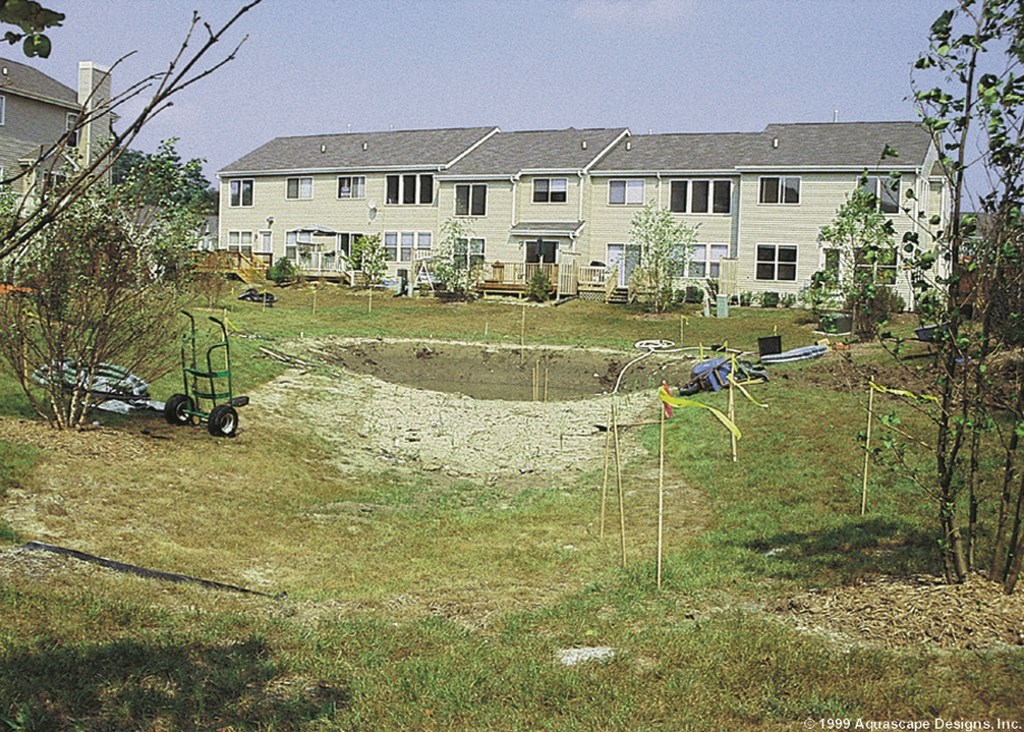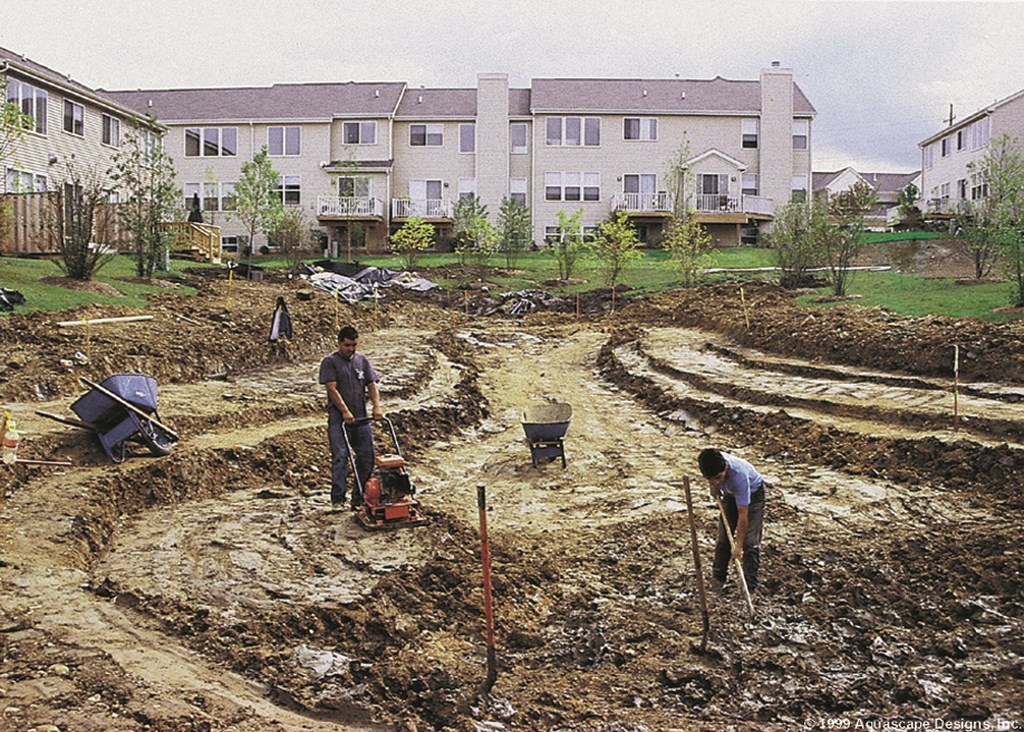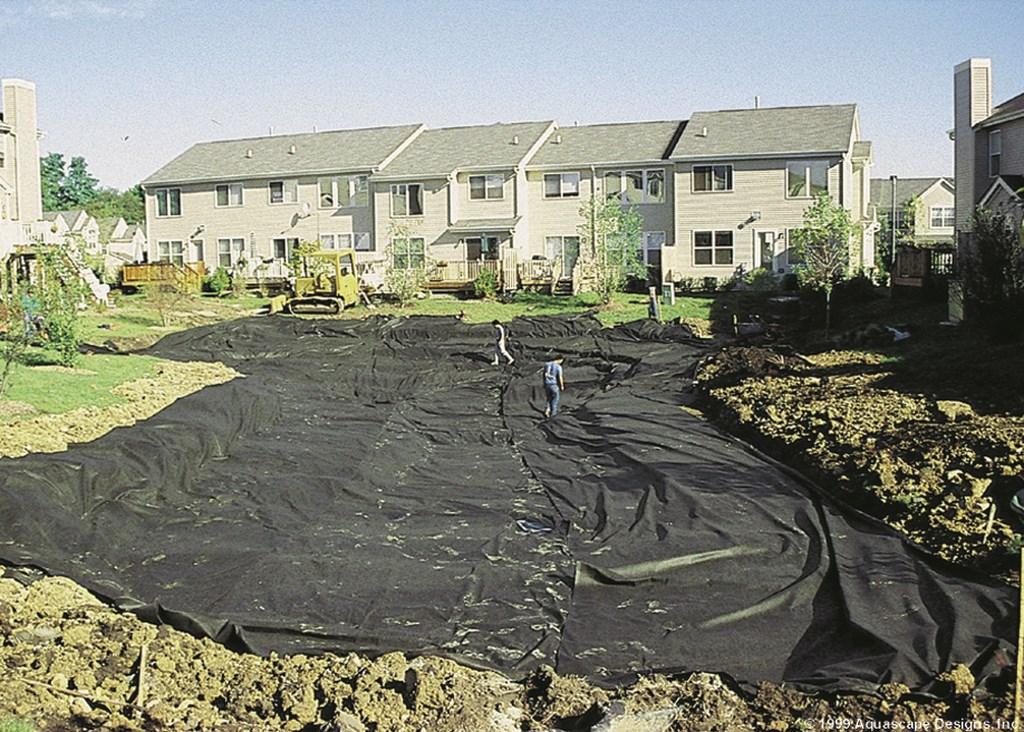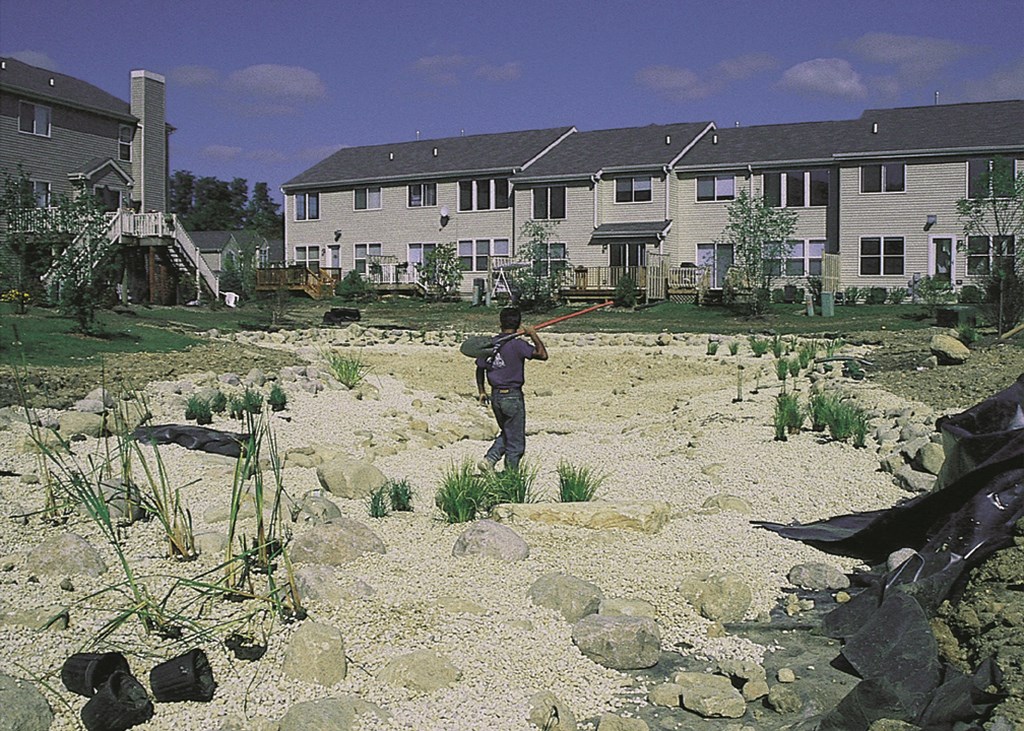A Passion for Ponds
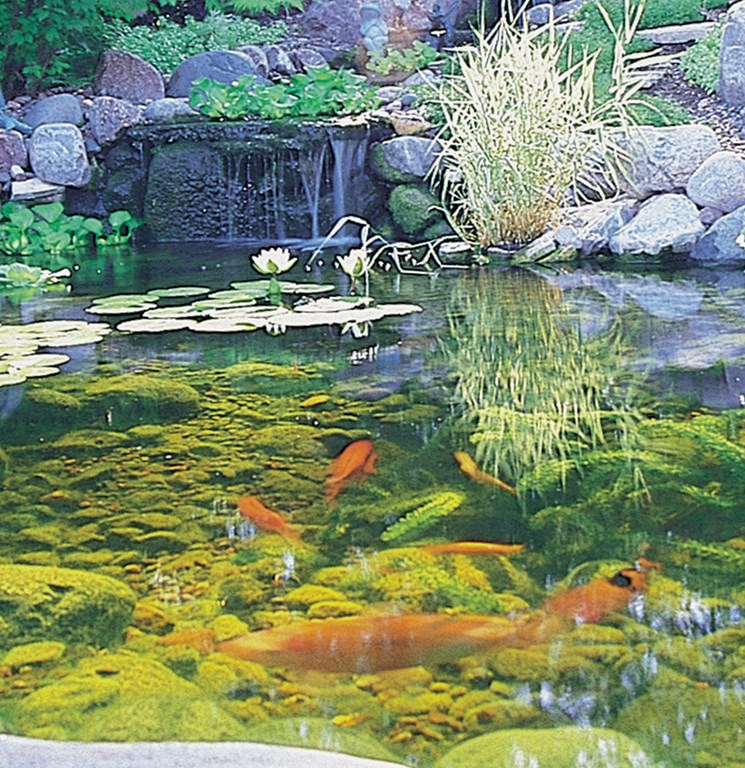
Waterfeatures may well be the hottest thing in landscaping today, and the reason is simple: No other landscape detail captures all the senses the way moving water does. I don’t get the impression that people sit around for hours watching their tulips grow, for example, but I know for a fact that people who have ponds in their yards will sit for hours, with others or in solitude, drinking in the scene and communing with the koi and the water lilies.
In that sense, ponds have more to offer than the average waterfeature: A pond’s live component adds interest and touches of tranquility that work in countless settings, from backyards and corporate offices to dining terraces and the common areas in apartment complexes. The possibilities are virtually limitless.
To show you what I mean and demonstrate some of the ways ponds can be used to add life and drama to landscapes, let me take you on a guided tour of some of our company’s installations and discuss ways ponds fit into a grander scheme of things.
THE VALUE OF A SYSTEM
Before we get to the photographs, let me clarify something. My company makes pond kits that we used to achieve what you’ll see on these pages. In this context, however, what or whose products we used are not the issue. On the contrary: What’s important is demonstrating how ponds fit into today’s lifestyles, how much they add to landscape settings and what they might mean to designers and builders whose customers want them to move in this direction.
There are indeed many ways to build ponds, and each project is different. True enough – although we’ve found through experience that working with a system is the easy way to go, freeing both contractor and customer to focus on creative and aesthetic issues rather than construction details.
I also recognize that presenting information on vinyl-lined ponds in a publication dedicated to custom concrete construction is something of an intrusion. I do so secure in our experience and in the knowledge that the system with which our ponds are installed is up to the challenge in terms of quality and reliability.
That said, let’s look at some gorgeous installations!
Start with a Classic
This classic 11-by-16 foot pond, built in a single day, includes a 6-foot stream and two waterfalls. A pond of this sort is ideal for people just getting into water gardening – small enough to be managed by a novice, but large enough that it will keep them from feeling they need to rip it out and replace it as they get more deeply involved and want to do more and more.
|
Basic Elements Although ponds vary tremendously in size and scope, the materials used are generally the same, simply increasing in quantity according to the project. Materials on this “classic” project include: [ ] one of our 11-by-16-foot pond kits[ ] 1 ton of 12-to-18-inch granite boulders [ ] 1-1/2 tons of 1/4-to-3-inch decorative gravel [ ] 2 tons of 6-to-12-inch granite cobblestones [ ] 1/2 ton of 18-to-24-inch granite boulders [ ] lava filter rock. –G.W. |
Although most residential ponds are found in backyards, there’s no doubt that a frontyard pond lends “curb appeal” to this home. It makes a statement to all who pass by, creating a peaceful yet dramatic transition from street to home. Again, this pond is based on our standard 11-by-16 design, but it also includes a 20-foot cascading stream that called for an additional liner and an extra ton of stone.
Elevated Approaches
This project was a lot of fun! Whenever a slope exists on a property, you can generally use it to create waterfalls. The slope here ran parallel to the house. We fit in a 50-foot stream that falls 6 feet into a 10-by-8-foot pond we positioned between a front walkway and the home. In all, the project used 12 tons of stone along with a special liner, a biological filter, a mechanical skimmer, a pump and 2-inch flexible plumbing.
Bigger Is Better
The Number One complaint our customers have after we’ve installed a pond is that they wish they’d made it bigger. It’s an issue we try to address up front (with varying results), but as a rule we recommend that our clients go with the largest pond that fits the available space. In this particular case, the lot was large and a 20-by-40-foot pond was just the ticket, with plenty of room for growing fish and plants. (This project, by the way, took a crew of seven two-and-a-half days to install.)
Great Lakes
This 110-by-65-foot pond started out as a retention basin built to hold storm water for this complex. The problem was that the homes had been sold to customers who were expecting a full-time lake rather than a basin that filled only when it rained. We were brought in to make the space hold water, look beautiful and appease a bunch of upset residents. We shaped this entire area in six days following our company’s basic 20 steps (see the details in the sidebar just below).
Winter Wonders
A pond takes on a whole different look in winter. As beautiful as this scene can be, however, it does raise concerns. For instance, ponds should not be allowed to freeze over completely, especially if they contain fish: There must be a hole in the ice to allow for oxygen exchange and the release of gases generated by decomposing organic material. For these reasons, we recommend using a floating heater, a submerged pump – or simply keeping the waterfall running.
Special Beauty
Conveying the extent of the artistry that can go into ponds is sometimes difficult to convey in words. Suffice it to let this waterfall-backed pond speak for itself.
|
Gravel Bottoms We use gravel to cover the bottoms of the ponds we build. Although this practice runs counter to recommendations of those who say that adding gravel makes the pond impossible to clean, I’ve found the opposite to be true: Gravel actually alleviates the need to clean the mulch and gunk out of a pond bottom. In fact, because ponds are “living” waterfeatures, gravel helps create a natural biosystem, providing a home for microorganisms essential to the health of plants and fish. Gravel helps reduce the build up of muck on the bottom and gives the installation a beautiful, natural appearance. And since we’ve been adding gravel to the bottom of our ponds, customers have made fewer comments about clarity or general cleanliness of the water. Also, gravel acts as ballast against hydrostatic pressure, holding the liner in place while it protects it from animal damage as well as the damaging effects of ultraviolet rays. – G.W. |
Alive with Potential
It all comes together in a pond: Water, plant life, rock, fish, birds, even sculpture – all of the traditional landscaping elements integrated in unique and awesome ways.
|
How Deep Is Deep Enough? Deciding how deep a pond should be is about as close to controversy as discussions of ponds can get. Those who worry about survival of their fish and plants through the winter’s cold and the summer’s heat will debate this topic endlessly. There are many factors to consider when choosing a pond depth: the specific climate zone; the number, size and type of fish; sunlight vs. shady conditions; winterizing options; and pond size and shape – to name just a prominent few. That’s more than enough variables to keep debates going. In response to these discussions, we’ve developed a few simple guidelines based on our observation that a pond with a depth of two feet is generally sufficient to support fish and plants year-round. This does not mean we suggest that a 2-foot pond will work in northern Minnesota or the desert of Arizona (where ponds need to be deeper), but away from such extremes, a 2-foot pond will generally suffice. That said, one of the biggest mistakes a pond builder can make is to go too deep. Yes, if a pond covers an acre, it can run to a 15-foot depth, but if you try to make an 11-by-16-foot pond run to a 4-foot depth, you’ll run into trouble: The angles and extent of the pond’s slope will be so great that placing stones will be difficult; worse yet, steep slopes are more subject to collapse! – G.W. |
Greg Wittstock, also known as “The Pond Guy,” built his first pond when he was 12 years old as a home for his pet turtles. He eventually ripped out and rebuilt that pond seven times, learning from his mistakes and always striving to perfect his skills. What began as a hobby ultimately turned into a lifelong passion. In 1990, Wittstock founded Aquascape Designs, a company specializing in waterfeature design and construction. The company, which now franchises its name and construction techniques to construction firms nationwide, lays claim to being the largest builder of water gardens in the United States.
















